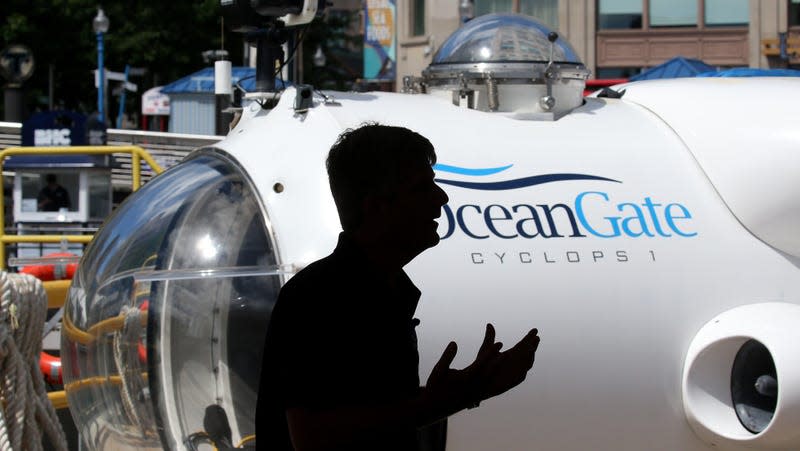Titan Sub Prototype Got Lost Off Seattle Bay, Used iPhone To Reorient Itself

It’s been nearly a year since OceanGate’s Titan submersible imploded as it descended to the Atlantic Ocean’s floor to view the wreck of the Titanic. Stockton Rush, the company’s CEO, and four other people were killed instantaneously when the vessel was crushed. Wired revisited the sub’s troubled development and the warning signs that were ignored.
Titan wasn’t OceanGate’s first submersible. Before building the doomed carbon-fiber tube, the company constructed the Cyclops as a steel-hulled prototype to trial the concept. Wired’s Mark Harris went with Rush in the prototype on a very illustrative trip in Seattle’s Elliott Bay. He explained:
Ninety minutes later and 130 meters deeper, we were totally lost. First the thruster software had glitched, leaving us floating just above the seafloor. Now the sub’s compass was acting up. The shipwreck we aimed to explore, a rail ferry that had once carried Teddy Roosevelt, was nowhere to be seen. All I could spy outside the Cyclops’ forward dome was the occasional salmon dancing in the frigid water.
As I began to feel the chill seeping through the sub’s steel hull, Rush asked me to open my iPhone’s compass app. He wanted to compare it to the one on his phone. The headings did not match, but he rebooted the thrusters and we set off in what he was pretty sure was the right direction.
“You’re heading in exactly the wrong direction,” said a faint voice transmitted via an acoustic link from the support ship tracking us on the surface. We eventually located the sunken ship, its rotting bow emerging into the Cyclops’ headlight. It was an otherworldly experience, made more thrilling by the hint of danger.
Back at the dock, Rush brushed off the problems we had encountered. This is exactly why OceanGate started with the Cyclops 1, he said, rather than anything capable of diving deeper. “I could have built a multimillion-dollar version and all of a sudden I’ve got to figure out really stupid stuff like the magnetic compass,” he told me. “The Cyclops 1 is getting us ready. When we do the Cyclops 2, then all these bugs will be out.”
Cyclops 2 was eventually renamed Titan. Be sure to read the full piece on Wired to learn about all the concerns tied to the carbon-fiber construction, like how Boeing produced a detailed 70-page preliminary design but denied involvement.

 Yahoo Autos
Yahoo Autos 